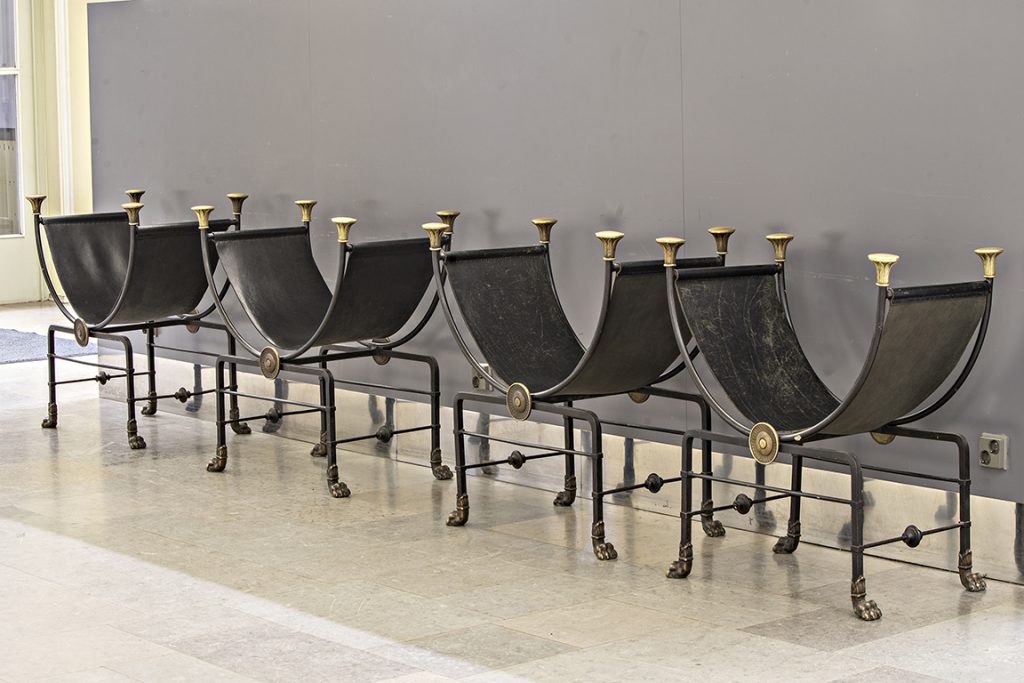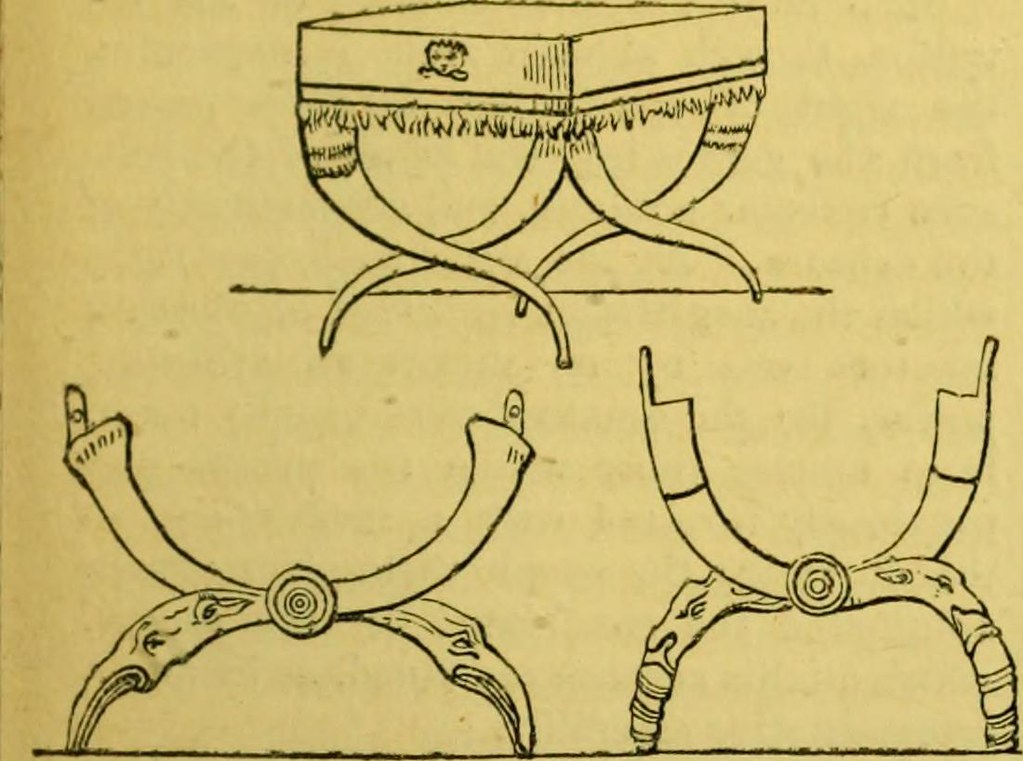In the University of Helsinki Main Building, students hurry to class through a lobby dominated by imposing columns and elegant U-shaped chairs. Made of black saddle leather and wrought iron, these neoclassical chairs are modelled on the curule seat used by the ancient Romans to denote political or military power. The chairs can be found in the Main Building extension at Fabianinkatu 33, colloquially called the ‘new side’, which was designed by architect J. S. Sirén and completed in 1937.

Arttu Brummer’s classic chair
The chairs, forged by blacksmith and metal artist Kaj Nuorivaara, were designed by Arttu Brummer (1891–1951), an influential force in Finnish applied arts. Brummer was commissioned to design furniture for the Main Building extension together with two other interior designers, Runar Engblom and Elli Ruuth. He designed all the benches and sofas for the lobbies as well as furniture for the faculty rooms. Although Brummer drew wider seats for the upper floors, the chairs in the entrance lobby are single-seaters. Perhaps he wished to offer individual students somewhere to take a short break during their busy days of lectures. Then again, the facility did not allow for wider seats.

The structure of the chair was modelled on the traditional X-chair and on the curule seat (sella curulis), developed from the former in ancient Rome. Brummer’s chair features motifs from ancient Egypt, including lotus-shaped decorative knobs, a round rosette at the front and lion’s paw feet. In ancient Rome, the curule seat played a significant role as a symbol of power and status and an object enabling officials to work. The foldable seat could be moved into a space that would thereby be transformed, for example, into a court of law for a judge to preside over.

Photo: School dictionary of Greek and Roman antiquities, p. 332 (Sir William Smith, 1845).
Flickr, Public Domain, CC 1.0. https://www.flickr.com/photos/internetarchivebookimages/14779898191.
A chair, not a log rack
Arttu Brummer (Brummer-Korvenkontio until 1927) began to design furniture for his own interior design studio in 1913. During his long career, he taught applied arts and general composition from 1919 to 1951 and was the artistic director of the Finnish central school of applied arts from 1944. Brummer played an extensive role in the field of Finnish applied arts: he worked as a critic and the curator of the Finnish museum of applied arts and was involved in and headed several associations, such as Ornamo. He also contributed to designing several exhibitions and was a noted glass artist.

Photo: Aalto University Archives, Felix Forsman. Finna, CC BY 4.0.
Brummer’s designs also drew the attention of students at the time. After the Main Building extension was completed, a person using the pseudonym ‘Tytti’ wrote in the Ylioppilaslehti student magazine (1/1937): “Entering the lobby, an astounded young fresher exclaimed: ‘Look, what a nice log rack, or is it used for coal, seeing as the colour’s turned so dark?’ ‘Dear child, it is a chair, not a log rack,’ I explained. ‘This building has central heating.’ ‘I see, but how do you sit on it? It doesn’t even have a backrest.’ ‘It is called functionalism, dear child.’”
Particularly in the 1930s, Brummer’s furniture exemplified the classical style, and ancient interior art was an important inspiration for his designs. He was also influenced by functionalism, which is evident in the non-public spaces of the Main Building and in the Metsätalo building. His furniture for the House of Parliament, including the session hall of the Government, represented the classical style. The history and traditions of art forms were important to Brummer, who can be described as a traditionalist rather than a modernist pioneer.
The renovation of the new side of the Main Building began in 2021 and will be completed by September 2023. As part of the renovation, the designer furniture in the building has also been restored. So why not try one of Brummer’s classic chairs, while immersing yourself in the fascinating history of the University and scholarly research. The new exhibition venue of the Helsinki University Museum will open in October 2023 in a facility adjacent to the entrance lobby on Fabianinkatu. Welcome to the museum!
Päivi Rainio, Museum Curator
Translation: University of Helsinki Language Services.
Sources:
Aav, Marianne (Ed.). Arttu Brummer: taideteollisuuden tulisielu. Taideteollinen korkeakoulu, Taideteollisuusmuseo, 1991.
Heinämies, Kati; Varakas, Ritva (Eds.). Yliopisto istuu: uniikkituoleja arkeen ja juhlaan. Helsingin yliopisto, tila- ja kiinteistökeskus, 2012.
Tuori, Kaius. Breaking Chairs: Sella Curulis in Roman Law, Identity and Memory. Arctos: Acta Philologica Fennica, vol. 54 (p. 257–284), 2020.
